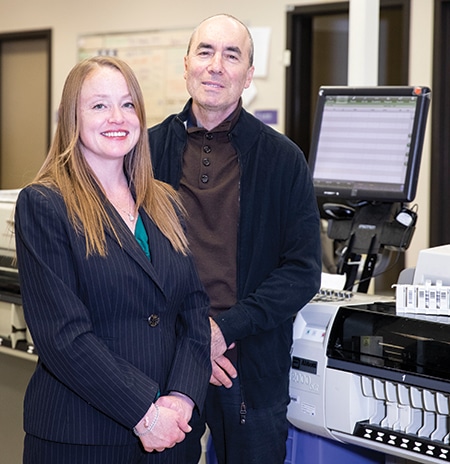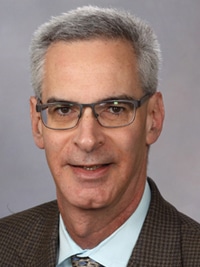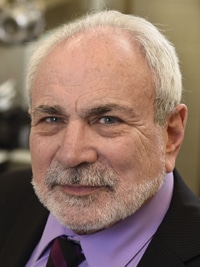Karen Titus
December 2019—At Mayo Clinic, the latest generation of cardiac troponin assay was an overnight success. Literally.
For months, the institution had been preparing to switch to Roche Diagnostics’ Elecsys Troponin T Gen 5 Stat assay, says Bradley S. Karon, MD, PhD, chair of the Division of Clinical Core Laboratory Services, Department of Laboratory Medicine and Pathology.
As the time of the rollout neared, an internal medicine colleague who was involved in overseeing the transition asked, “‘What will the burn-in period be?’” recalls Dr. Karon, who is also co-director of Mayo’s stat labs and point-of-care testing programs. Surely clinicians would be able to continue ordering the Gen 4 assay for a time, right? So how long would that last?
Dr. Karon’s dramatic-sounding answer? “Zero hours.”
The switch occurred in March 2018. At midnight on the day the new assay was implemented, the Gen 4 order was obsoleted (to use Dr. Karon’s word), and the Gen 5 went live. “Anybody who had a panel started got it finished with 4th Gen, and then we just switched whole hog—the whole practice—to 5th Gen,” he says.

Dr. Amy Saenger and Dr. Fred Apple at Hennepin County Medical Center, where they and an ED colleague are leading the launch of a high-sensitivity cardiac troponin assay. It will require “education, sometimes a lot of education, and certainly ongoing education,” says Dr. Saenger. [Photo: Ackerman + Gruber]
As they should be, says Dr. Apple. “Everyone who is using a contemporary assay should, as soon as possible, consider implementing a high-sensitivity troponin assay, whether you’re an I or a T user,” he says. “The wealth of clinical data for early rule-outs and earlier rule-in of myocardial infarction, within a two- or three-hour window, is a very positive patient care incentive to bring these assays to practice, especially for females.”
(Note: Gen 5 was not designated by the FDA as a high-sensitivity assay, though it is considered to be a hs-cTn in Europe. It is, however, more sensitive compared with the Gen 4 cTnT assay, “so it’s in between,” says Dr. Karon. This has not created problems for his clinical colleagues, he says. “It doesn’t seem to bother them. I think they’ve gotten the fact that this is an FDA labeling issue,” and that the Gen 5 is being used in clinical protocols that are based on hs-cTn assays.)
The assays also provide welcome risk stratification, which hadn’t been possible with previous assays, Dr. Apple says. High-sensitivity cardiac troponins provide a reference interval, similar to that offered by high-sensitivity C-reactive protein, he says, “where we’re actually able to look at a continuum of risk in patients to determine separately for males and females what their relative risk is, both for all-cause mortality as well as major adverse cardiac events over, say, a 180-day period.”
The switch was a logical choice at Mayo, says Dr. Karon. For years, the institution has had active research programs in cardiovascular medicine and troponin testing. So once 5th Gen became approved in the United States, “there was a desire to implement that into our practice.”
Desire alone sustains only poets, however. Ardor needs action.At both Mayo and Hennepin, the work has been taken up by those outside as well as inside the laboratory. As Dr. Apple puts it, “The more the merrier. You don’t want to have anyone feel like they weren’t consulted.”
Mayo formed an implementation group, which was led by a hospitalist and included two cardiologists, Dr. Karon, and the practice chair of emergency medicine. Beyond that core group, “We pulled in representatives from the outpatient practice, surgery, anesthesia—pretty much every area of practice,” Dr. Karon says.
The group began its work in fall 2017. The laboratory’s first step was collecting 1,500 samples, from slightly more than 800 patients, and measuring both 4th Gen and 5th Gen troponin T. “That allowed us to present to the implementation group the implications of moving to the 5th Gen T,” Dr. Karon says. “We had discussions on what our reference intervals would be, and those were all up to the implementation group to decide.”
Ultimately they went with fairly low intervals—10 ng/L for females and 15 ng/L for males—based on the European guideline, and forgoing the package insert.
They adopted a zero-, two-, and six-hour panel to replace the previous panel of zero-, three-, and six-hour measurements. The implementation group “was constantly asking questions” about the number of patients available for comparison; since there were no previous two-hour samples, “as we designed the protocols we assumed the two-hour value would behave more or less like the three-hour value from our sample set,” Dr. Karon says.
A one-hour measurement was even more appealing, says Mayo’s Allan S. Jaffe, MD, but ultimately the group decided against it. The precision of the new assay and the tight, very small differences that needed to be detected made it “very likely, if not absolutely clear, that we would misclassify some patients” in the course of shaving an hour off the protocol. “So we went with a two-hour protocol to avoid that specifically,” says Dr. Jaffe, professor of cardiology, professor of laboratory medicine and pathology, and former chair of the clinical core lab services division of the Department of Laboratory Medicine and Pathology. An expert on the use of cTn, he has been responsible for the troponin component of the universal definition of myocardial infarction.
Among the key questions that arose, Dr. Karon says, “was how many patients in the ED will have an elevated value compared to the current state.” The lab had an answer, based on those 1,500 samples: About 30 percent of patients in the ED had elevated 4th Gen T, and slightly more than 60 percent had an elevated 5th Gen T, he says.
“It actually didn’t concern the ED as much as it has in most other institutions,” says Dr. Karon. That’s because for a decade the lab had already been relying on a troponin panel that included calculated delta values between time points reported directly into the EMR, as well as information from Dr. Jaffe and recommendations from national and International Federation of Clinical Chemistry and Laboratory Medicine guidelines about best practices for fifth-generation implementation.
Under the new protocol, most patients in the ED get a zero- and two-hour value; 80 to 90 percent do not need a six-hour measurement. “So the ED can make decisions faster,” Dr. Karon says. “It makes them very happy.”
At Mayo Rochester, adopting the new protocol has been a seamless transition, he says. “I think six, eight months in we got it to work quite well. We don’t hear many issues or complaints or confusion.” This is due in part to the fact that “we’re operating in the world of panels, where you need to look at the individual absolute panels and the deltas between time points. And the lab, in the EMR, provides an interpretation of the delta as changing or not changing.” A full decade before the switch to 5th Gen, clinicians had been using panel testing with the 4th Gen—the approach was a familiar one, in other words. Adoption has hit a few potholes at Mayo’s other sites, which have less experience using panels, he says.
Values are reported as whole numbers in ng/L, while previous assays used ng/mL. Mayo’s clinicians adapted with relative ease, Dr. Karon says. “We have very good internal education, so prior to implementation Dr. Jaffe and others in cardiology presented at many, many practice groups.” Mayo also uses a real-time point-of-care information system internally, called Ask a Mayo Expert, which included information developed by cardiology and emergency medicine. That, too, helped smooth the path.
High-sensitivity cardiac troponin, like a fringe religious sect, seems to both excite the imagination and arouse fear. On his listening tour, Dr. Jaffe did hear plenty of the-world-is-going-to-end angst. “Of course that didn’t happen,” he laughs.
Clinicians asked about running both tests side by side, but Dr. Karon and colleagues were adamant. As the aforementioned pilot study made clear, the logistics of running both tests and reporting results is not trivial, Dr. Jaffe says.
It also confirmed that the correlation between the Gen 4 and Gen 5 is not precise. “A less than .01 on a Gen 4 could be less than six on a 5th Gen. It could also be a 20, it could be a 30. The tests don’t correlate well at values [5th Gen] below 100 ng/L,” says Dr. Karon. “My concern on a burn-in is one patient would have less than .01 with a less than six, and this next patient would have less than .01 with a 25, and somebody’s going to call the lab and say, ‘Which one is right?’ Well, they’re both right. They don’t correlate well at those levels.”
It’s also becoming evident that using the same cutoff for women and men is not an ideal match. The decision to use sex-specific cutoffs follows recommendations by the IFCC Committee on Clinical Applications of Cardiac Biomarkers and the AACC Academy, says Amy K. Saenger, PhD, DABCC, and is endorsed in clinical guidelines, primarily the “Fourth universal definition of myocardial infarction (2018)” (Thygesen K, et al. J Am Coll Cardiol. 2018;72[18]:2231–2264). Her support for sex-specific cutoffs is unwavering. “It is clear that males and females have different cutoffs, with females having a lower 99th percentile,” says Dr. Saenger, medical director of the clinical laboratories, Hennepin County Medical Center, and associate professor, Department of Laboratory Medicine and Pathology, University of Minnesota.
‘I think six, eight months in we got it to work quite well. We don’t hear many
issues or complaints or confusion.’ — Bradley Karon, MD, PhD
“You’re probably missing some elevations in women if you’re not using them,” Dr. Karon says.
Dr. Apple agrees that incentive to use sex-specific cutoffs is strong. “There are data to show that women will benefit much more strongly than men because we will be picking up a greater percentage of women who would have been missed for smaller MIs.”
“My thought on this,” he continues, is “it’s no different than CK-MB,” the assay of choice two test generations ago. “We had statistically different male versus female cutoffs, and we implemented and used those in practice.”
Not to put too fine a point on it, he adds, this is the norm of working in laboratory medicine. “What do we do?” he asks. “We do the appropriate validation to look for reference ranges that are statistically different. I think it’s a disservice to any patient population not to use those.”
The lower 99th percentile for women makes sense from a pathophysiological standpoint, says Dr. Saenger, given that the amount of myocardium differs between the sexes. Nevertheless, she says, “Reporting sex-specific cutoffs is more controversial on the clinical side,” with many cardiologists thinking they’re unnecessary or that a randomized controlled trial is needed to prove their usefulness. Echoing Dr. Apple, she says, “We do not do that for any other assay. If there are studies that show there are sex-specific differences, like in the case of creatinine, we validate or verify this with our assay and report the reference intervals in that manner. High-sensitivity troponin assays should be no different.”
Dr. Jaffe notes the variety of opinions in the field, and then points out that much of it depends on the assay—some have a large difference between the 99th percentile values in women and men. “My concern has always been, and still is, that many of the studies done in Europe did not include an adequate cohort of women to know if sex-specific cutoffs are or are not important.” Remember, he says, the majority of European studies included only patients whose symptoms were typical, which restricted the involvement of women, who often present atypically. “So they decided they didn’t need to use it. I think in retrospect that it’s very likely that if they had had a broader screen, and been more open to the idea” of the sexes presenting differently, “they may well have come to a different conclusion.” Moreover, with many of the population studies done in Europe, patients were not as sick as those typically seen in U.S. EDs.
Dr. Saenger agrees: “Data now indicates that MI is underdiagnosed in females not because their symptoms are more vague or they present later in life, but largely due to the fact that we were using the wrong cutoff.” Labs couldn’t distinguish analytical differences in 99th percentiles before the advent of hs-cTn, she says. When sex-specific cutoffs are used, MI rates for males and females are nearly the same, though she too notes that it depends on the assay.
Much of the literature is based on European experience, but the data globally are overwhelming for rule-outs, Dr. Apple says. That, plus multiple guidelines, should persuade labs to adopt the newer high-sensitivity assays. “It’s a huge patient safety positive impact when you bring this assay up,” he says. “You bring it up, and you eventually have enough of your own data. You analyze your own data to see how it’s doing.”Hennepin is fortunate in the data department, says Dr. Saenger, noting that the majority of the U.S. data for Abbott’s hs-cTnI assay is based on the Hennepin UTROPIA study cohort. On both the lab and clinical side, “We have seen some of the nuances and can predict how implementing this test will impact our positivity rates.” She is confident that the upcoming move from contemporary cTnI using an overall 99th percentile to hs-cTn using sex-specific percentiles “will not result in a major increase in the number of patients with an ‘abnormal/flagged’ value.”

‘There are many more type two MIs now. Using sex-specific cutoffs, we’re finding more modest, or small, MIs, particularly in women.’ — Allan Jaffe, MD
European traditions, while fine for Europe, can benefit from a bit of tweaking on American shores (a point not lost on colonial Americans). Dr. Jaffe noted some of the differences in a paper he co-wrote on implementing the Gen 5 assay (Sandoval Y, Jaffe AS. Am J Med. 2017;130[12]:1358–1365). Several European studies, for example, advocated using an absolute baseline cutoff value of 52 ng/L (for hs-cTnT) as a positive one-hour rule-in for acute myocardial injury. “It’s not that it doesn’t work in an ideal circumstance,” says Dr. Jaffe. But the United States is not an ideal controlled study population, and the European experience “didn’t take into account that in the United States we draw troponins on a much larger number of patients.”
In Europe, studies were oriented to patients with chest pain—and those who present with typical chest pain at that. “And the older you are, the less typical you become,” says Dr. Jaffe. “As an obligatory rule-in, 52 ng/L would sweep half of critically ill patients into the hospital,” he says, as well as older individuals with comorbidities.
That hasn’t happened at Mayo, though Dr. Jaffe heard his fair share of doomsday scenarios from worried colleagues before the implementation. There’s been no great uptick in patients admitted or additional procedures, he reports. The majority of patients—more than 80 percent—are triaged within a couple of hours, he says, and 10 to 20 percent require later samples.
 CAP TODAY Pathology/Laboratory Medicine/Laboratory Management
CAP TODAY Pathology/Laboratory Medicine/Laboratory Management
